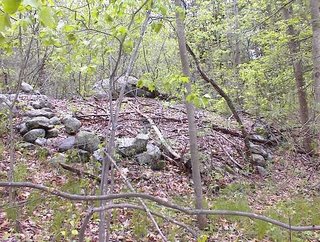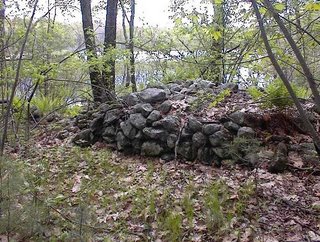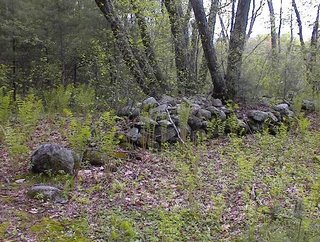
 In Journals from 2005 I wrote:
In Journals from 2005 I wrote:I have always thought these types of piles could well be from careful field clearing. TF disagrees completely. We argued about how these could have been made. The last one, for example, which is built up around an outcrop has no ramp up it. But a key point here is that these piles contain the material I expect was extracted from a field - the full distribution of sizes is present and the argument seems to be about whether anyone would have bothered to make a tidy pile when all that was needed was to clear a field. I do not find either alternative compelling. It is worth noticing that there is a prominent pointed rock out in the middle of the pond there and that, from this last pile, the direction from pile to rock was that of the summer solstice sunset. This kind of potentially ceremonial relationship argues against field clearing. But a field was cleared to make the pile. Another point worth making is that there are plenty of awfully well built stone walls. Why did they bother with that?


No comments :
Post a Comment